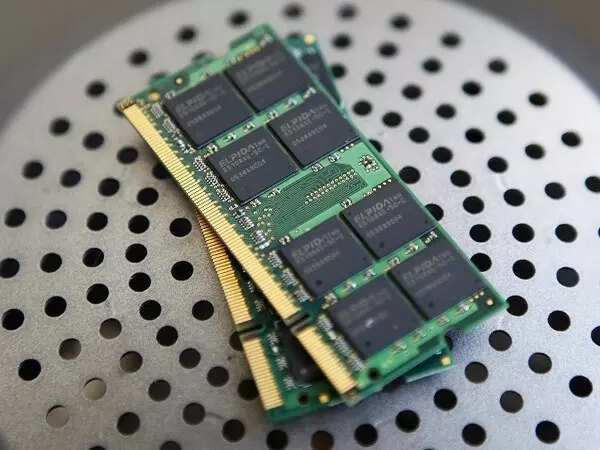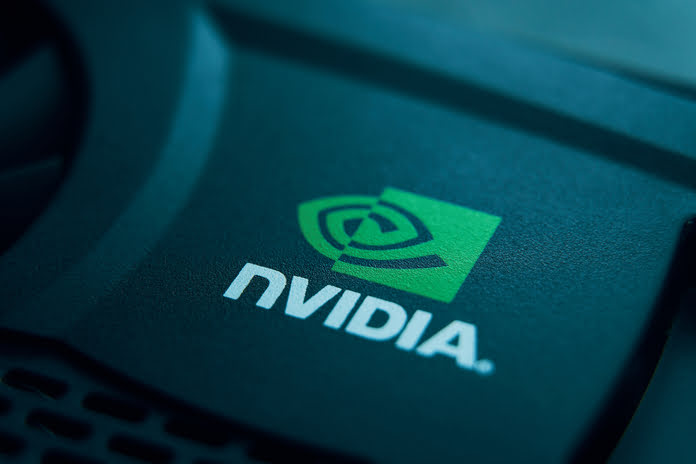1. How does the new GeForce RTX 4090 D differ from its predecessor, and why was it introduced?
Nvidia’s latest release, the GeForce RTX 4090 D, marks a significant departure from its predecessor, the RTX 4090, due to the necessity to comply with U.S. export controls targeting China. The modified chip is designed to offer a “quantum leap in performance, efficiency, and artificial intelligence-driven graphics.”
Table of Contents
The key differentiator lies in its adherence to U.S. government export controls, a response to the stringent regulations imposed by the Biden Administration in October. This move comes after the blocking of two modified AI chips, A800 and H800, meant for the Chinese market.

To ensure compliance, Nvidia engaged extensively with U.S. government officials during the development of the RTX 4090 D. The chip is not only tailored to meet regulatory requirements but also exhibits a 5% reduction in gaming and creating speeds compared to its banned counterpart, the RTX 4090. This modification aligns with U.S. Commerce Secretary Raimondo’s statement that Nvidia can still sell AI chips to China, albeit with restrictions on the highest processing power.
2. What is the impact of the new chip on Nvidia’s dominance in China’s AI chip market?
Nvidia has historically held a commanding position, with over 90% market share in China’s $7 billion AI chip market. However, the introduction of the RTX 4090 D, specifically designed for the Chinese market in compliance with export controls, raises questions about the potential shifts in the industry landscape. Analysts suggest that the U.S. curbs could create opportunities for domestic players like Huawei Technologies to make inroads.
The modified chip’s pricing, 12,999 yuan ($1,842), reflects a $50 increase compared to the second most advanced chip in the product series available to Chinese customers.
The implications of the export controls and the release of the RTX 4090 D could reshape the competitive dynamics in China’s AI chip market, potentially opening doors for local players to gain traction.
3. Why did Nvidia delay the launch of one of the new AI chips, and what are the implications?
In response to the October export rules, Nvidia had plans to announce three new AI chips for the Chinese market, as reported by SemiAnalysis in early November. However, a Reuters report later revealed that Nvidia informed its Chinese customers of a delay in the launch of one of these chips until the first quarter of the following year. The remaining two chips have not yet made an appearance on Nvidia’s China website.

The delay raises questions about the challenges Nvidia faces in navigating the evolving regulatory landscape. Understanding the reasons behind the postponement and the strategic implications can provide insights into the complexities of the global semiconductor industry.
4. How does the performance of the RTX 4090 D compare to other chips in the product series?
The RTX 4090 D, designed to comply with U.S. export controls, is positioned as a China-focused alternative in Nvidia’s product series. Compared to its counterparts, the chip exhibits a 5% reduction in both gaming and creating speeds. This performance gap, while reflecting the necessary modifications for compliance, prompts an examination of the trade-offs between adhering to regulatory requirements and delivering cutting-edge technology.

An analysis of the performance metrics can offer valuable insights into the market positioning of the RTX 4090 D and its suitability for various applications in the gaming and AI sectors.
5. What are the pricing dynamics of the RTX 4090 D and its impact on consumer choices?
The China-focused RTX 4090 D comes with a price tag of 12,999 yuan ($1,842), making it $50 more expensive than the second most advanced chip in the product series. Understanding the pricing dynamics and the factors influencing the cost can shed light on consumer choices in the Chinese market.
Examining the affordability and value proposition of the RTX 4090 D in comparison to other available options can provide valuable market insights and help anticipate consumer preferences.
6. How does the delay in chip launches impact Nvidia’s relationship with its Chinese customers?
Nvidia’s decision to delay the launch of one of the new AI chips raises questions about its relationship with Chinese customers. The semiconductor industry is characterized by rapid advancements and fierce competition, and any delays can have cascading effects on customer trust and satisfaction.
Exploring the implications of the delay on Nvidia’s standing in the Chinese market and its relationships with customers can provide a nuanced understanding of the challenges faced by multinational corporations in navigating geopolitical uncertainties.
7. What opportunities and challenges do U.S. export controls present for Nvidia in the Chinese market?
The introduction of U.S. export controls, particularly targeting high-processing-power AI chips, poses both opportunities and challenges for Nvidia in the Chinese market. While the RTX 4090 D allows the company to continue serving its Chinese clientele, the restrictions on the highest processing power chips necessitate strategic adjustments.
/cloudfront-us-east-2.images.arcpublishing.com/reuters/PEL2SG6CW5L35LQZL6AYO6H4U4.jpg)
Analyzing the broader implications of U.S. export controls on Nvidia’s market share, strategic partnerships, and innovation roadmap can offer valuable insights into the dynamics of the semiconductor industry in the context of geopolitical regulations.
Summary
| Article Question | Key Points |
|---|---|
| 1. RTX 4090 D vs. RTX 4090 | Compliance with U.S. export controls, 5% reduction in gaming and creating speeds. |
| 2. Impact on China’s AI Chip Market | Nvidia’s dominant position, potential opportunities for domestic firms. |
| 3. Delay in AI Chip Launch | Reasons for delay, strategic implications for Nvidia. |
| 4. Performance Comparison | RTX 4090 D’s performance relative to other chips in the series. |
| 5. Pricing Dynamics | Cost of RTX 4090 D, impact on consumer choices. |
| 6. Delay’s Impact on Customer Relations | Effects on Nvidia’s relationship with Chinese customers. |
| 7. Opportunities and Challenges | Implications of U.S. export controls on Nvidia in the Chinese market. |
FAQ
1. Why did Nvidia launch the RTX 4090 D?
The RTX 4090 D was introduced to comply with U.S. export controls targeting China, following the blocking of two previous AI chips for the Chinese market.
2. How does the RTX 4090 D impact Nvidia’s market share in China?
The release of the RTX 4090 D raises questions about Nvidia’s dominance in China’s AI chip market and the potential opportunities for domestic players.
3. What led to the delay in the launch of one of Nvidia’s new AI chips?
The delay in the chip launch is attributed to the October export rules, presenting challenges for Nvidia in navigating the evolving regulatory landscape.
4. How does the performance of the RTX 4090 D compare to other chips in the series?
The RTX 4090 D exhibits a 5% reduction in gaming and creating speeds compared to its counterparts, reflecting the necessary modifications for compliance.
5. What are the pricing dynamics of the RTX 4090 D?
The China-focused chip is
priced at 12,999 yuan ($1,842), slightly more expensive than the second most advanced chip in the series.
6. How does the delay in chip launches impact Nvidia’s relationship with Chinese customers?
The delay in launching one of the new AI chips prompts questions about its effects on Nvidia’s standing in the Chinese market and relationships with customers.
7. What opportunities and challenges do U.S. export controls present for Nvidia in the Chinese market?
U.S. export controls pose both opportunities and challenges for Nvidia, requiring strategic adjustments in response to regulatory constraints.


